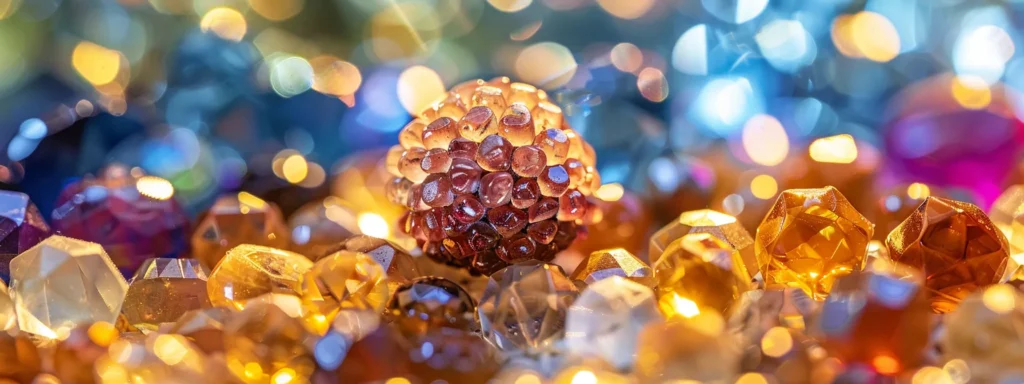Rudraksha Therapy
Understanding the Dynamics of Twenty One Mukhi Rudraksha Price Trends
The price of Twenty One Mukhi Rudraksha has become a topic of interest among spiritual enthusiasts and investors alike. Many people seek guidance on how to navigate the fluctuating market, fueled by leadership trends and confidence levels surrounding these sacred beads. This article will explore the historical price patterns, key factors influencing prices, and how demand and supply dynamics shape the market. By understanding these elements, readers will gain insight into the true value of Twenty One Mukhi Rudraksha, allowing them to make informed decisions and dispel any fear of being misled.
The Importance of Twenty One Mukhi Rudraksha in Spiritual and Economic Contexts
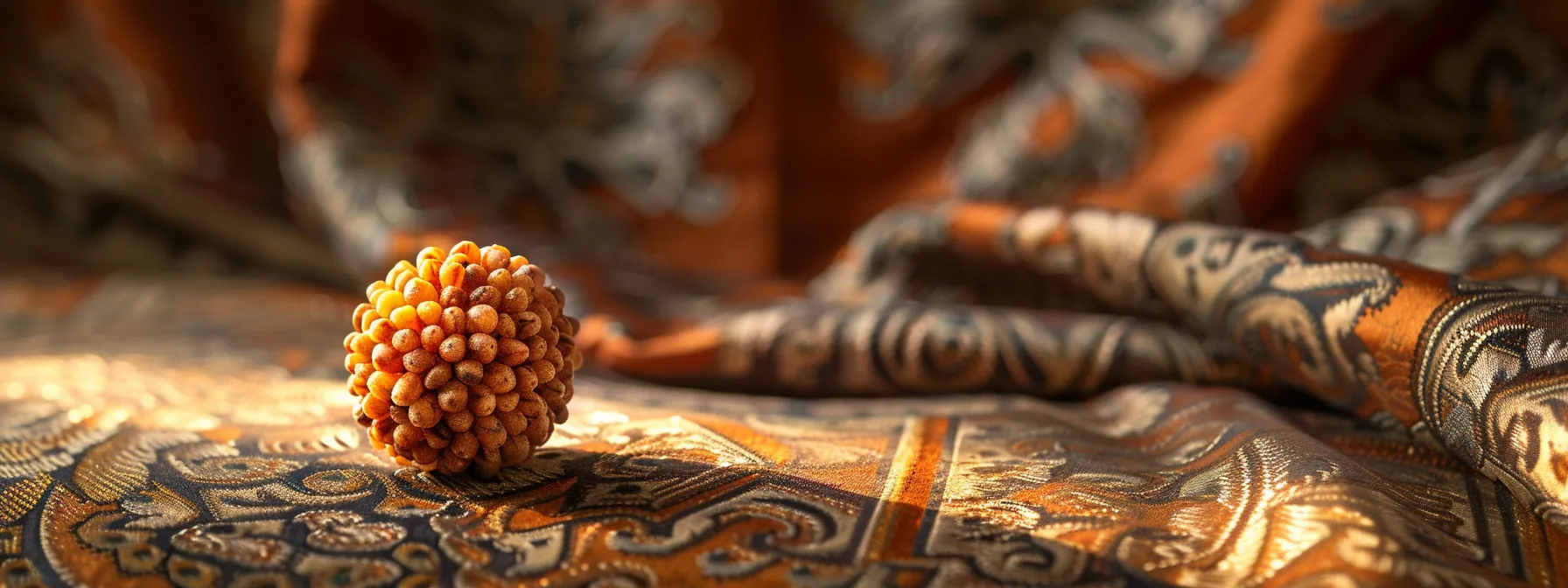
The significance of the Twenty One Mukhi Rudraksha extends beyond its spiritual properties to encompass cultural, historical, and economic dimensions. This rare bead symbolizes creativity and abundance, deeply rooted in the traditions surrounding the Pashupatinath Temple. Its use in personal growth and well-being appeals to many, while collectors actively seek these beads, thereby influencing their market value. Each of these aspects contributes to a comprehensive understanding of its impact on price trends.
Understanding Its Unique Spiritual Significance
The Twenty One Mukhi Rudraksha holds a distinct spiritual significance, particularly associated with Lord Bhairava, a manifestation of Shiva that represents transformation and stability. This connection enhances the bead‘s appeal among devotees who seek its blessings for personal development and spiritual enlightenment. Its unique properties are believed to foster qualities such as confidence and wealth, making it a sought-after component in spiritual practice.
The use of Twenty One Mukhi Rudraksha in rituals often incorporates it in garlands dedicated to deities like Durga, symbolizing power and prosperity. Such practices not only promote spiritual alignment but also connect practitioners with the ancient traditions that affirm the bead‘s importance. By wearing or carrying this Rudraksha, individuals aim to attract blessings that enrich both their spiritual journey and material wealth.
The market dynamics surrounding the Twenty One Mukhi Rudraksha also reflect its spiritual relevance. The sale price of these beads varies significantly based on quality, authenticity, and demand among collectors and spiritual enthusiasts. As awareness grows regarding their benefits, more individuals invest in this rare bead, thereby increasing its perceived value in both spiritual and economic contexts.
Cultural and Historical Value in Different Regions
The Twenty One Mukhi Rudraksha holds substantial cultural and historical significance across various regions, particularly in the context of prayer and devotion. In India, these beads are often associated with Lord Kubera, the deity of wealth, where they are used to enhance collective faith among practitioners. This connection elevates their status as a gemstone not only for its spiritual benefits but also for its role in attracting prosperity and abundance in one’s life.
In indigenous cultures of the Himalayan region, the Twenty One Mukhi Rudraksha has been deeply intertwined with local traditions and rituals. Its use in religious ceremonies showcases a long-standing belief in the rudra qualities of the bead, which are thought to provide protection and stability. By incorporating this bead into their faith practices, individuals align themselves with centuries-old customs, fortifying their commitment to personal growth through spiritual rituals.
The historical context of Twenty One Mukhi Rudraksha extends into trade practices, where it has served as both a spiritual object and a commodity. As awareness of its properties grew, so did its demand, resulting in an increased market value. The interplay of faith and economics highlights the bead’s dual role in society, making it a sought-after item for both spiritual practitioners and collectors alike. Understanding this dynamic can enhance appreciation for the gemstone’s impact on cultural heritage and economic trends related to spiritual artifacts.
Role in Personal Growth and Well-Being
The Twenty One Mukhi Rudraksha, often regarded as a powerful seed, serves as a transformative tool for personal growth and well-being. Its unique shakti is believed to enhance the practitioner’s ability to achieve mental clarity and emotional stability. Incorporating this seed into daily puja rituals, such as chanting “Om Namah Shivaya,” allows individuals to connect deeply with their spiritual essence, fostering a profound sense of inner peace.
Many spiritual seekers view the Twenty One Mukhi Rudraksha as a potent ally in their journey towards self-discovery and empowerment. By invoking the blessings of divine beings, including the energy of Devi, practitioners often find themselves more aligned with their life goals. This alignment supports overall growth, helping individuals to navigate challenges with resilience and purpose, ultimately leading to enhanced well-being.
The role of the Twenty One Mukhi Rudraksha extends into daily life through consistent meditation and usage. Regular interaction with this sacred seed encourages a deeper understanding of oneself and one’s path. As individuals integrate it into their spiritual practices, they often report increased confidence and a clear direction, demonstrating how personal growth can be enriched through the ritualistic engagement with such significant spiritual artifacts.
Collectors’ Interest and Its Impact on Value
Collectors’ interest in the Twenty One Mukhi Rudraksha significantly influences its market value. As enthusiasts of both Hinduism and Ayurveda seek these rare beads for their reputed spiritual benefits and healing properties, demand continues to rise. This growing interest often drives prices higher, reflecting a broader understanding of the trinity of spirituality, prosperity, and personal growth associated with the bead.
The rarity of the Twenty One Mukhi Rudraksha appeals to collectors who view it as a valuable investment. Many individuals believe that owning this bead not only enhances their spiritual journey but also contributes to their understanding of ancient knowledge. Consequently, this perception enhances the bead‘s desirability, further influencing its valuation in the marketplace.
As awareness of the benefits of the Twenty One Mukhi Rudraksha expands, so does its appeal among collectors, making it a significant item in spiritual and economic contexts. The bead‘s symbolic association with prosperity and personal transformation elevates its status, prompting individuals to invest in these artifacts. This interaction between collectors and the market shapes price trends, establishing the bead as a sought-after commodity in both the spiritual community and among collectors.
The value of Twenty One Mukhi Rudraksha lies not only in its spiritual significance but also in its market journey. Understanding its historical price patterns reveals much about its demand and the deep connections it fosters in both faith and commerce.
Historical Price Patterns of Twenty One Mukhi Rudraksha
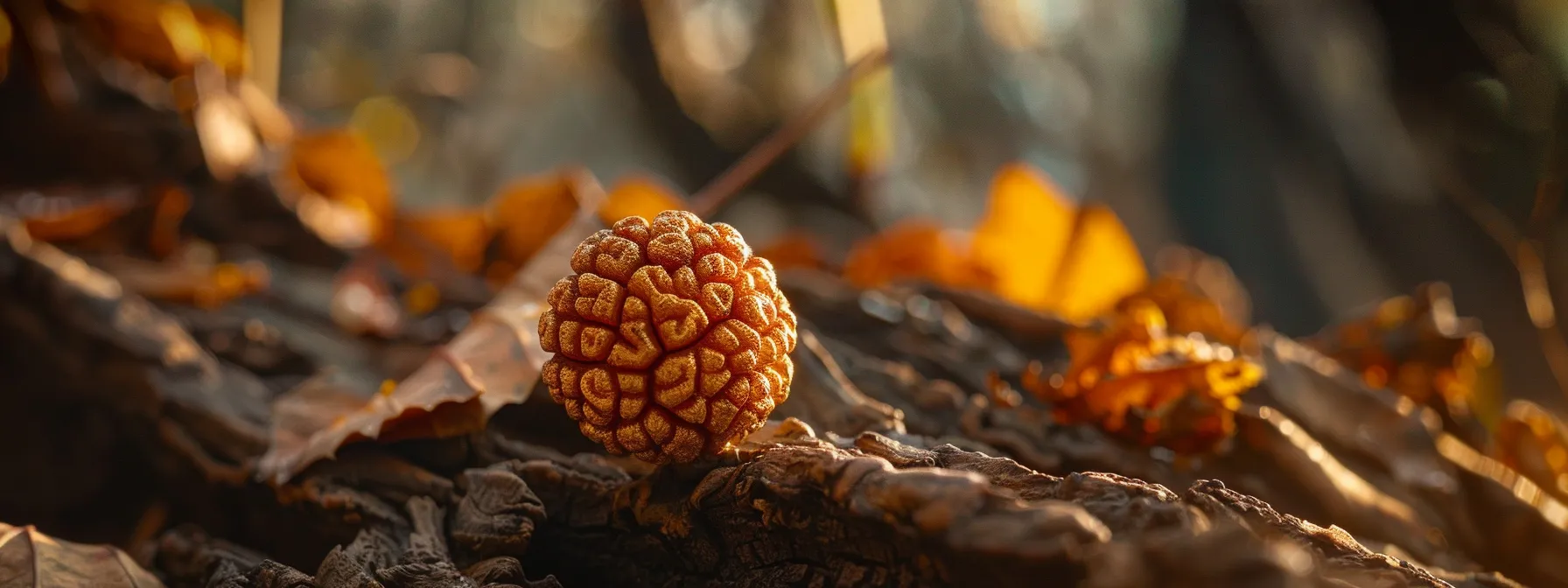
The historical price patterns of the Twenty One Mukhi Rudraksha highlight key trends in market dynamics related to these sacred prayer beads. Early market prices and availability set the foundation for current values, while significant price shifts over the decades showcase the influence of demand among practitioners of meditation and tantra. Milestones affecting market value, including cultural interest in Hindu deities, further illustrate the evolving landscape. A comparative analysis of past and present market trends sheds light on how these factors shape perceptions and investment decisions today.
Early Market Prices and Availability
In the initial market phase of the Twenty One Mukhi Rudraksha, pricing reflected its limited availability and the reverence for its association with Hindu mythology. Formed from the seeds of the Rudraksha tree, these beads held significant meaning, as derived from the Vedas, which established their spiritual and religious value among practitioners. Consequently, the early prices were relatively stable, driven primarily by demand from devotees who sought these beads for their bhakti and spiritual practices.
As awareness of the properties of the Twenty One Mukhi Rudraksha grew, its availability began to expand alongside a corresponding rise in price. The introduction of these beads into religious marketplaces and spiritual events created a pivotal shift, where their intrinsic value was recognized not only for devotional purposes but also as collectible artifacts. This burgeoning interest led to a gradual increase in prices, reflecting the bead‘s dual role in both spirituality and economic contexts.
The dynamic between early market prices and availability set the stage for the future valuation of the Twenty One Mukhi Rudraksha. As more individuals and collectors began to appreciate their significance within Hindu tradition, the demand surged, driving prices higher. This pattern established a foundation for ongoing price trends, revealing the complex interplay between faith, religion, and economic viability that continues to shape the current market landscape.
Significant Price Shifts Over the Decades
Over the decades, the price of Twenty One Mukhi Rudraksha beads has experienced significant fluctuations driven by various factors, including changing perceptions of its spiritual and economic value. Initially, the beads were primarily sought for their association with peace and divinity within Shaivism, leading to stable prices. However, as interest in their energy and healing properties grew, prices began to reflect this rising demand, indicating a shift in how these beads are valued among spiritual practitioners and collectors.
The expansion of the marketplace for Twenty One Mukhi Rudraksha has also contributed to notable price shifts. As awareness increased and more individuals incorporated these beads into their spiritual practices, the quest for authenticity and quality intensified. This competitive landscape encouraged sellers to enhance their offerings, leading to higher prices associated with more sought-after pieces that resonate with potential buyers’ needs for peace and spiritual growth.
In recent years, the interplay between the demand among spiritual seekers and collectors has continually shaped price trends. As more devotees recognize the benefits of the Twenty One Mukhi Rudraksha in promoting meditation and personal development, the demand has surged, pushing prices upward. Therefore, understanding these significant price shifts is essential for individuals looking to invest in these beads, helping them make informed decisions that align with their spiritual aspirations and market dynamics.
Milestones Affecting Market Value
Milestones that have impacted the market value of the Twenty One Mukhi Rudraksha include significant cultural shifts towards holistic practices and increased interest in spiritual artifacts. As individuals seek greater spirituality, many turn to items like the japamala, specifically crafted with Twenty One Mukhi Rudraksha beads to enhance their meditation practices. This growing acceptance contributes to a rising demand, reinforcing the bead‘s status and elevating its market value.
Another key milestone is the connection of the Twenty One Mukhi Rudraksha with revered deities such as Parvati and Bhairava. As more practitioners explore the Sanskrit texts linking these beads to divine qualities like courage and prosperity, the perceived value increases. Collectors and spiritual seekers alike prioritize authenticity and quality, further driving prices upward based on their reverence for cultural heritage.
Finally, the rise of online platforms has changed how Twenty One Mukhi Rudraksha is marketed and sold. Increased accessibility allows potential buyers to easily compare prices and quality, impacting demand. As a result, this visibility has led to fluctuations in market values, reflecting a blend of spiritual significance and economic trends that influence investment decisions related to these sacred beads.
Comparing Past and Present Market Trends
The price trends of the Twenty One Mukhi Rudraksha have evolved significantly over the decades, influenced by factors such as spirituality and the growing recognition of the unique elaeocarpus seeds from which these beads are derived. Historically, the market was predominantly driven by local demand, with prices remaining relatively stable due to limited awareness and availability. However, as knowledge of the spiritual properties linked to this Rudraksha, including its association with Brahma and the teachings found in the Upanishads, gained popularity, the demand surged, leading to noticeable price increases.
In the contemporary market, the dynamics surrounding the Twenty One Mukhi Rudraksha have shifted toward a more global perspective, boosted by online platforms and a broader interest in spiritual artifacts. As people seek authentic spiritual tools, the significance of these beads in enhancing personal development and meditation practices continues to attract investment. This modern inclination, coupled with the prestigious status of the bead, allows it to command higher prices, reflecting changes in consumer behavior compared to past market conditions.
Current market trends showcase a marked contrast to those from earlier decades. Today’s collectors and spiritual seekers prioritize quality and authenticity, resulting in price differentials based on factors such as craftsmanship and the inclusion of materials like silver in jewelry made with these Rudraksha beads. The interplay of spirituality, tradition, and economic value creates a compelling narrative that encourages informed investments and deeper appreciation for the Twenty One Mukhi Rudraksha and its place in spiritual history:
- Early market characterized by local demand.
- Surge in interest reflecting spiritual ties to Brahma and Upanishads.
- Modern platforms widen accessibility for potential buyers.
- Collector interest influences price through focus on quality and authenticity.
The historical price patterns reveal much about the significance of the Twenty One Mukhi Rudraksha. Understanding the key factors influencing its price will further illuminate its true value in today’s market.
Key Factors Influencing the Price of Twenty One Mukhi Rudraksha
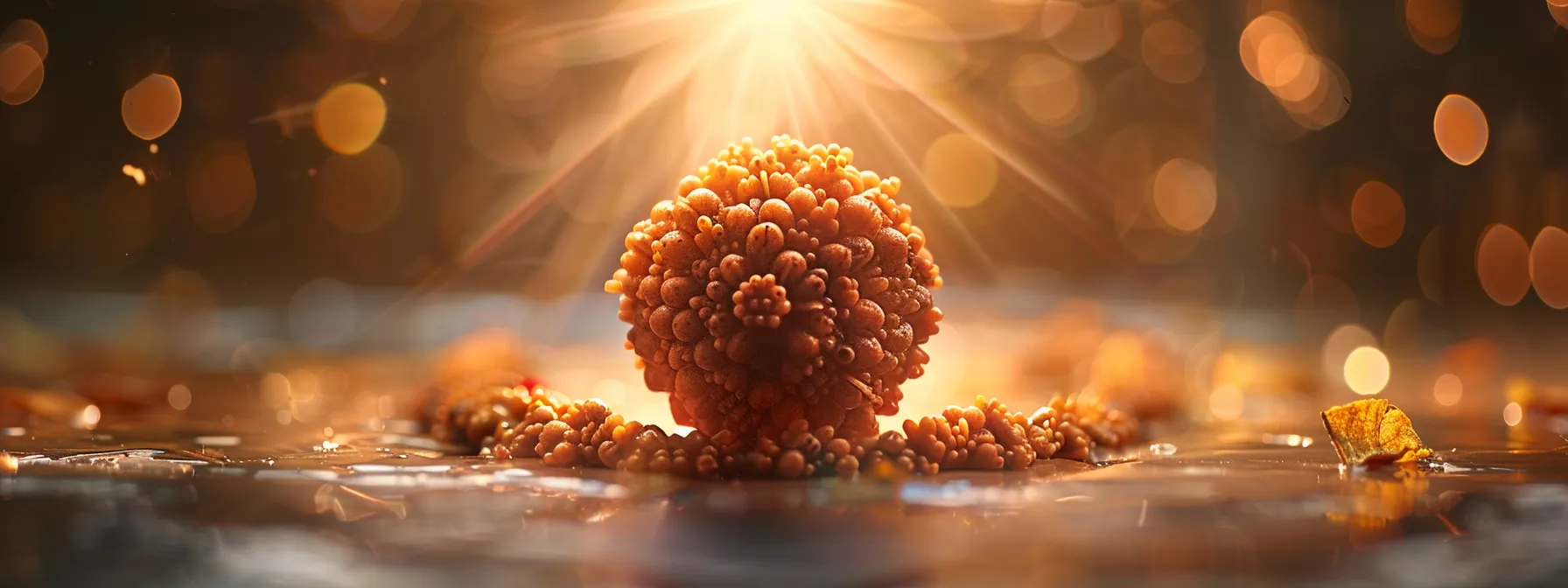
Several key factors play a pivotal role in influencing the price of the Twenty One Mukhi Rudraksha bead. Rarity and limited availability significantly elevate its worth, while issues surrounding authenticity and certification are crucial for maintaining trust among buyers. Quality grading and size variations further contribute to price differentiation, along with broader economic factors and consumer purchasing power. Additionally, the influence of global market demands reflects changing trends among spiritual seekers, including devotees of vishnu and followers of zodiac beliefs, all seeking this sacred bead for wisdom and connection to the goddess.
Rarity and Limited Availability
The rarity and limited availability of Twenty One Mukhi Rudraksha directly impact its market price. As fewer of these beads are sourced from the Rudraksha tree, collectors and spiritual seekers find them increasingly desirable. This scarcity drives demand, particularly among those interested in Rudraksha Therapy, where such beads are believed to enhance spiritual practices and overall well-being.
Understanding how rarity functions within the marketplace can guide potential buyers in making informed decisions. The unique properties associated with the Twenty One Mukhi Rudraksha lead many to seek it not just for its beauty, but for its purported benefits in personal development. At Heal2 Home, clients often explore the use of these beads to facilitate deeper connections during meditation and spiritual practices, further elevating their perceived value.
Given the significance of rarity, the economic implications extend beyond mere aesthetics. The Twenty One Mukhi Rudraksha often represents an investment for spiritual growth as well as a collector’s item. As more individuals seek these beads through reputable sources, understanding market dynamics helps ensure that purchases align with both personal goals and market trends, ultimately supporting enhanced experiences in their spiritual journeys.
Authenticity and Certification Issues
Authenticity and certification are crucial factors that significantly influence the price of Twenty One Mukhi Rudraksha. Buyers are increasingly aware of the importance of verifying the source and quality of these sacred beads. This understanding is essential, as the market is rife with imitations that do not possess the genuine spiritual properties attributed to authentic Twenty One Mukhi Rudraksha. Consequently, the value of certified beads tends to be higher, as they are linked to reputable sources that ensure their authenticity.
Industry standards for certification play a significant role in establishing buyer trust and confidence in the purchase. Reputable sellers often provide certificates that validate the bead‘s origin and quality, which adds a layer of assurance for consumers. Collectors and spiritual seekers alike prioritize these certifications, recognizing that they not only affirm the bead’s spiritual benefits but also its investment potential in a fluctuating market.
The growing demand for certified Twenty One Mukhi Rudraksha has prompted many retailers to focus on transparent sourcing practices. This shift toward authenticity not only enhances market value but also cultivates a deeper connection between the buyer and the sacred artifact. By ensuring that they invest in certified beads, individuals can fulfill their spiritual aspirations while also participating in a marketplace that respects and honors the cultural significance of these spiritual tools.
Quality Grading and Size Variations
Quality grading plays a crucial role in determining the price of the Twenty One Mukhi Rudraksha. Higher-quality beads, characterized by their flawless appearance and well-defined mukhis, typically command higher prices. Buyers often seek beads that exhibit a rich, deep color and smooth texture, as these attributes enhance both the bead‘s spiritual efficacy and its aesthetic appeal, thereby influencing purchasing decisions.
Size variations among Twenty One Mukhi Rudraksha beads also contribute to their market value. Larger beads are generally perceived as more powerful and thus attract a higher price. Collectors and spiritual practitioners alike are often willing to invest more in larger, high-quality specimens, as they not only serve as valuable spiritual tools but also as significant collectibles that symbolize prosperity and abundance.
The growing interest in authentic and high-quality Twenty One Mukhi Rudraksha has prompted both retailers and buyers to place greater emphasis on these factors. Understanding how quality grading and size variations influence pricing is essential for informed purchasing. As buyers become more discerning, they increasingly recognize that investing in superior quality seeds enriches their personal and spiritual practices, enhancing overall satisfaction with their acquisitions.
Economic Factors and Consumer Purchasing Power
Economic factors play a crucial role in influencing the price of the Twenty One Mukhi Rudraksha. Fluctuations in the global economy can affect consumer purchasing power, often determining the willingness of individuals to invest in spiritual artifacts. As the economy strengthens, consumers may prioritize spending on such items for personal development and wellness, thus elevating market demand for these sacred beads.
The average income of potential buyers directly impacts the price dynamics of Twenty One Mukhi Rudraksha. When disposable incomes rise, consumers demonstrate increased interest in acquiring authentic spiritual tools, leading to higher prices in the marketplace. Conversely, in times of economic downturn, potential buyers may tighten their budgets, causing a dip in demand and subsequently lower prices for these beads.
Furthermore, trends in consumer preferences and behaviors also shape the economic landscape surrounding the Twenty One Mukhi Rudraksha. As awareness grows about the benefits tied to personal growth and holistic practices, more individuals invest in these beads as part of their spiritual journey. This heightened interest influences market prices, creating an environment where both spiritual enthusiasts and collectors actively seek quality Rudraksha, driving up its value and establishing it as a desirable commodity in the marketplace.
Influence of Global Market Demands
The influence of global market demands on the price of Twenty One Mukhi Rudraksha reflects a growing interest in spiritual practices and holistic wellness. As more individuals worldwide seek authentic spiritual tools, the demand for these sacred beads increases significantly. This surge in interest not only drives prices upward but also creates a competitive marketplace where quality becomes paramount.
Furthermore, the interconnectedness of the global economy allows for broader access to Twenty One Mukhi Rudraksha. Online platforms enable enthusiasts and collectors from various regions to engage with sellers and compare offerings, enhancing awareness of the bead‘s significance. This accessibility encourages individuals to invest in these beads as part of their spiritual journeys, thereby impacting overall market trends.
The rise of wellness trends that incorporate spirituality has further amplified the demand for Twenty One Mukhi Rudraksha. As people seek to cultivate personal growth and inner peace, the association of this bead with transformational practices becomes more appealing. Consequently, the value of these beads fluctuates in response to shifts in consumer enthusiasm, solidifying their position as essential artifacts within the spiritual community.
The price of the Twenty One Mukhi Rudraksha reflects many factors, but demand and supply shape the market’s pulse. Understanding these dynamics reveals not just numbers, but the deeper currents of interest and availability that keep this sacred bead in focus.
Analyzing Demand and Supply Dynamics
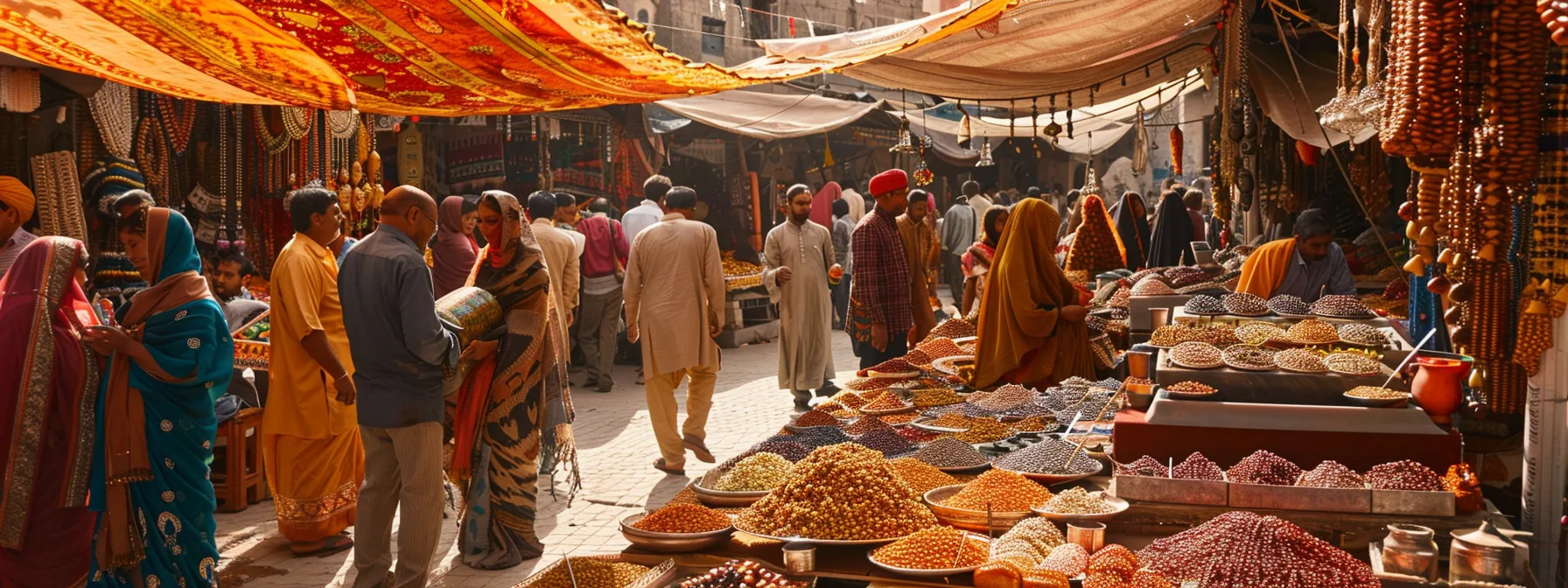
The dynamics of the Twenty One Mukhi Rudraksha market are influenced by various factors pertinent to demand and supply. Current market demand among devotees and collectors drives the search for authentic beads while understanding the suppliers and sources highlights their origins. Additionally, harvesting practices impact supply levels, and import/export regulations affect availability. Seasonal fluctuations in supply chains further contribute to market conditions, impacting pricing trends.
Current Market Demand Among Devotees and Collectors
The current market demand for Twenty One Mukhi Rudraksha beads is primarily driven by spiritual enthusiasts and collectors who value the bead‘s unique properties and its association with divine blessings. Many devotees believe that wearing or using this sacred bead enhances their meditation practices, fosters personal growth, and brings financial prosperity. As a result, there has been a noticeable increase in the search for authentic Twenty One Mukhi Rudraksha among individuals seeking these benefits in their spiritual journeys.
Furthermore, the growing awareness of the bead‘s healing properties has attracted a diverse demographic of buyers, including those new to the spiritual community. Collectors view these rare beads as valuable investments that can appreciate in market value over time. This dual interest from both spiritual practitioners and collectors contributes significantly to the heightened demand, often resulting in competitive pricing for high-quality, certified pieces.
Market dynamics also reveal that as the reputation of Twenty One Mukhi Rudraksha expands, especially through online discussions and social media platforms, potential buyers are more educated about what to look for when purchasing. This creates an informed consumer base that prioritizes authenticity and quality, further driving the demand for reliable sellers. Organizations like Heal2 provide guidance and resources, assisting individuals in navigating this market and ensuring they make informed decisions that align with their spiritual aspirations.
Suppliers and Sources: Where Do They Come From?
The primary sources of the Twenty One Mukhi Rudraksha often originate from the lower Himalayan regions, particularly in Nepal and parts of India. These areas are known for their favorable climatic conditions which support the growth of the Rudraksha tree, ensuring a consistent supply of quality beads. Understanding the geographical roots of these sacred seeds is crucial for both spiritual practitioners and collectors, as it directly impacts authenticity and market value.
Suppliers range from local farmers to specialized retailers who harvest and sell these beads in various forms. Many suppliers engage in ethical harvesting practices, ensuring that the Rudraksha trees are cultivated sustainably, thus maintaining their ecological balance. Recognizing legitimate suppliers is essential, as this not only safeguards the integrity of the bead but also enhances the buyer’s confidence in their investment, knowing they are acquiring a genuine Twenty One Mukhi Rudraksha.
The demand for authentic Twenty One Mukhi Rudraksha has led to the establishment of reliable networks that connect consumers with trusted suppliers. These networks often include online platforms where sellers provide comprehensive information about the origin and certification of their beads. This accessibility empowers buyers to make well-informed decisions, fostering a deeper understanding of what to look for when investing in these sacred beads, ultimately supporting their spiritual endeavors:
Impact of Harvesting Practices on Supply
Harvesting practices significantly affect the supply of Twenty One Mukhi Rudraksha beads, influencing overall market dynamics. Sustainable and ethical harvesting techniques not only preserve the Rudraksha trees but also ensure a consistent supply of high-quality beads over time. Such practices require careful management of natural resources, directly impacting the beads’ availability in the marketplace.
In regions like Nepal and India, farmers often engage in traditional harvesting methods that honor ecological balance. By employing sustainable practices, they enhance the health of Rudraksha trees, allowing for continuous yield without depleting the natural resource. This dedication to responsible harvesting can lead to a stable supply, which is crucial as demand for these spiritual artifacts continues to rise.
Moreover, the sourcing of Twenty One Mukhi Rudraksha from platforms that prioritize transparency and certification can strengthen buyer confidence. As consumers become more educated regarding the significance of ethical sourcing, their purchasing decisions often reflect a preference for suppliers who adhere to responsible practices. This shift can create a positive feedback loop, further motivating suppliers to maintain sustainable harvesting as a means of building trust with their customers:
Import and Export Regulations Affecting Availability
The import and export regulations surrounding the Twenty One Mukhi Rudraksha significantly impact its availability in the global market. Countries that impose stringent legal frameworks for the trade of this sacred bead can restrict access to various authentic sources, thereby influencing supply chains. This creates challenges for buyers seeking genuine Rudraksha, often leading to increased prices due to limited availability in regions where demand remains high.
Furthermore, compliance with these regulations is essential for suppliers to ensure that their products are legally sourced. For instance, suppliers from Nepal and India must adhere to local laws that govern the sustainable harvesting of Rudraksha trees. These practices not only protect the environment but also ensure that trade remains ethical, which in turn can enhance market confidence among buyers seeking authentic and responsibly sourced Twenty One Mukhi Rudraksha.
Global demand for the Twenty One Mukhi Rudraksha continues to rise, making understanding these export regulations more crucial for potential investors. Awareness of how these laws influence supply can assist buyers in making informed decisions when purchasing this spiritual artifact, ultimately fostering a stable market. Engaging with retailers who are knowledgeable about import and export regulations can further support consumers in their quest for quality and authenticity.
Seasonal Fluctuations in Supply Chains
Seasonal fluctuations play a significant role in the supply chain of Twenty One Mukhi Rudraksha, impacting market availability and pricing. The harvesting period, typically aligned with specific climatic conditions, determines the quantity and quality of beads that can be sourced. During favorable seasons, when the Rudraksha trees yield abundantly, the market may see an increase in supply, potentially leading to lower prices for consumers.
Conversely, off-seasons or adverse weather conditions can severely reduce the number of available beads, creating scarcity in the market. Such conditions elevate the prices as the demand among spiritual seekers and collectors remains constant despite limited supply. Understanding these seasonal patterns is crucial for buyers who wish to time their purchases to secure the best possible prices for authentic Twenty One Mukhi Rudraksha.
Moreover, suppliers who are aware of seasonal trends can strategically plan their inventory to mitigate price volatility. Engaging with reputable suppliers who maintain consistent sourcing practices and transparency regarding harvesting seasons can help buyers obtain quality beads at reasonable prices. This proactive approach allows consumers to navigate supply chain dynamics effectively, ensuring they achieve their spiritual aspirations without overextending their budgets.
Understanding demand and supply reveals much about market trends. Yet, the true worth lies in evaluating authenticity and the deeper value inherent in what one seeks.
Evaluating Authenticity and True Value

Identifying genuine Twenty One Mukhi Rudraksha beads is essential for ensuring authentic purchases. Trusted certification bodies play a crucial role in validating these sacred items, while awareness of common scams helps buyers avoid pitfalls. Professional appraisal methods provide further assurance of value, and practical tips for making informed purchases enhance the overall buying experience.
Identifying Genuine Twenty One Mukhi Rudraksha Beads
Identifying genuine Twenty One Mukhi Rudraksha beads is vital for individuals seeking authentic spiritual tools. Buyers can start by examining the bead‘s appearance; authentic beads typically exhibit distinct mukhis or furrows that define their unique characteristics. Ensuring these features align with established standards can significantly reduce the chances of purchasing fake products.
Another essential factor in verifying authenticity is the provenance of the bead. Reputable sellers usually provide certificates of authenticity, detailing the source and quality of the Rudraksha. This transparency helps buyers make informed decisions and reassures them that they are acquiring true Twenty One Mukhi Rudraksha, which is critical for those who wish to harness its full spiritual potential.
Additionally, seeking guidance from established organizations such as Heal2 can enhance the purchasing experience. These organizations often offer resources and workshops that educate consumers about authentic sourcing and mindful purchasing. Being equipped with knowledge not only empowers buyers but also fosters a greater understanding of the true value represented by genuine Twenty One Mukhi Rudraksha in both spiritual and economic contexts.
Trusted Certification Bodies and Their Role
Trusted certification bodies play a crucial role in the market for Twenty One Mukhi Rudraksha by providing the validation needed for authenticity. These organizations ensure that each bead meets established quality standards, which is vital for protecting consumers from counterfeit products. By offering certificates that verify the source and characteristics of the beads, they enhance buyer confidence and help maintain the integrity of the market.
These certification bodies utilize strict testing and evaluation processes to determine the authenticity of the beads. Their expertise includes assessing the number of mukhis, the bead’s origin, and overall quality. As a result, buyers can rely on these certificates as a dependable resource, allowing them to make informed decisions while shopping for Twenty One Mukhi Rudraksha artifacts.
Moreover, reputable certification organizations contribute to an educational framework that empowers consumers. By providing insights on key factors such as sourcing and grading, these bodies help buyers understand the significance of authentic Rudraksha in enhancing their spiritual practices. This knowledge not only aids in making wise investments but also fosters a deeper appreciation for the spiritual and cultural heritage associated with the Twenty One Mukhi Rudraksha.
Common Scams and How to Avoid Them
Potential buyers of the Twenty One Mukhi Rudraksha often face various scams that could lead to the purchase of counterfeit products. One common tactic involves sellers claiming that their beads possess special properties or originate from sources that are not credible. This misleading information can be detrimental for purchasers who are looking for genuine, effective spiritual tools.
To avoid falling victim to these scams, individuals should always seek certification from reputable sources. Authentic sellers typically provide a certificate that verifies the origin and quality of the Rudraksha. This documentation reassures buyers that they are making a wise investment in a genuine Twenty One Mukhi Rudraksha, integral for meaningful spiritual practice.
Additionally, consumers should be cautious when purchasing from online platforms or unfamiliar distributors. It is advisable to read reviews and assess the seller’s credibility before making a purchase. Establishing trust in the source of the Rudraksha is essential for ensuring authenticity and true value, which directly affects the overall experience associated with these spiritual artifacts. Here are vital steps to consider for avoiding scams:
- Verify the authenticity by asking for certification from reputable sources.
- Research the seller’s background and read reviews from past buyers.
- Be wary of prices that seem unusually low compared to market trends.
- Request detailed information about the bead‘s origin and quality.
Professional Appraisal Methods
Professional appraisal methods for Twenty One Mukhi Rudraksha are essential in determining the authenticity and true value of these spiritual artifacts. Experts typically assess the bead‘s physical characteristics, including the number of mukhis and overall quality, using specialized tools to ensure accurate evaluations. Buyers benefit from these thorough appraisals as they gain confidence in their investment decisions, knowing they have acquired a genuine bead.
In many cases, certified professionals utilize comparative analysis techniques, examining similar beads in the marketplace to establish value benchmarks. This process involves detailed market research, factoring in aspects such as rarity and demand among collectors. By presenting buyers with comprehensive appraisal reports, these professionals help illuminate trends in pricing, enriching the understanding of how the bead‘s value fluctuates over time.
Furthermore, engaging with certified appraisers allows potential buyers to learn more about the intricacies of the market for Twenty One Mukhi Rudraksha. Through consultations, individuals can gain insights into best practices for purchasing and maintaining the beads’ spiritual properties. This knowledge equips buyers with the tools necessary for making informed decisions, ultimately enhancing their spiritual journey and connection with these powerful artifacts.
Tips for Making an Informed Purchase
To make an informed purchase of a Twenty One Mukhi Rudraksha, individuals should first focus on verifying the authenticity of the bead. This can be achieved by asking sellers for certificates of authenticity, which validate the bead’s origin and quality. Authentic certification adds credibility to the purchase, ensuring buyers acquire genuine spiritual artifacts that hold true value.
Next, potential buyers should conduct thorough research on the seller or retailer before completing a transaction. Reading reviews and assessing the seller’s reputation within the spiritual community can provide insight into their trustworthiness. A reputable seller will typically have a history of positive customer feedback, reinforcing the confidence in purchasing authentic Twenty One Mukhi Rudraksha.
Lastly, individuals should stay aware of market trends related to pricing and authenticity. Understanding the price range for high-quality Twenty One Mukhi Rudraksha beads can help buyers identify inflated prices or potential scams. Gathering information on the average market value enables informed decision-making, ensuring that individuals invest wisely in these sacred beads.:
- Verify the bead‘s authenticity by requesting certificates.
- Research the seller’s reputation through reviews.
- Stay informed about market pricing trends.
As the quest for authenticity continues, the market for Twenty One Mukhi Rudraksha remains a focal point of interest. Anticipating future trends in pricing reveals a landscape ripe with potential and uncertainty.
Future Outlook of Twenty One Mukhi Rudraksha Prices
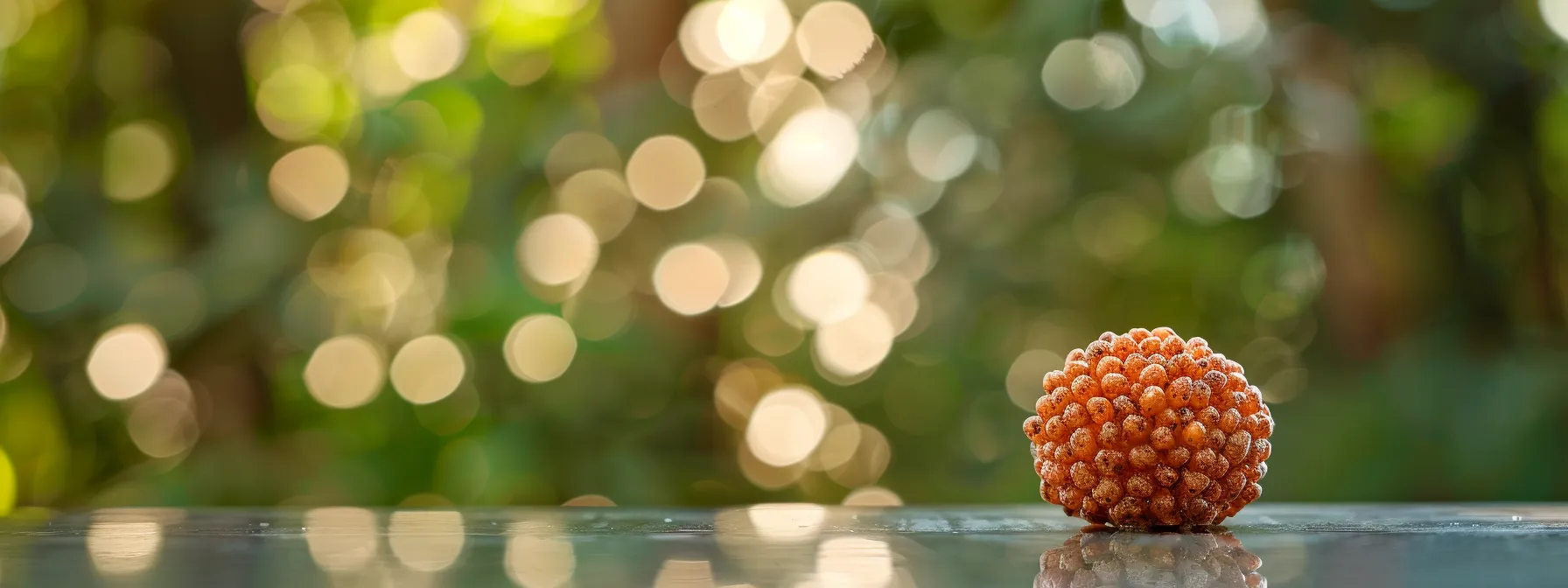
The future outlook of Twenty One Mukhi Rudraksha prices encompasses several critical factors that will shape its market dynamics. Predicted market trends suggest a steady increase in demand, influenced by advancements in technology that enhance authentication processes. Environmental concerns around sustainable sourcing will also play a significant role, alongside shifting consumer attitudes that favor authentic spiritual practices. For investors and collectors, understanding these variables will be essential for developing effective strategies moving forward.
Predicted Market Trends in the Coming Years
The market trends for Twenty One Mukhi Rudraksha are anticipated to demonstrate a steady increase in demand over the coming years. This growth is largely driven by rising interest among spiritual seekers who recognize the bead‘s unique properties and benefits for personal development. As more individuals embrace holistic practices, the market for authentic Twenty One Mukhi Rudraksha is expected to expand, resulting in increased prices reflective of this growing interest.
Furthermore, advancements in technology are likely to enhance the authentication processes for these sacred beads. As buyers become more informed and discerning, the demand for certified Twenty One Mukhi Rudraksha will continue to rise. Retailers who prioritize transparency and authenticity will stand out in the marketplace, attracting customers willing to invest in high-quality spiritual artifacts, thereby impacting future pricing trends positively.
Environmental concerns surrounding sustainable sourcing will also play a crucial role in shaping the future of Twenty One Mukhi Rudraksha prices. The growing emphasis on ethical harvesting practices is likely to create a more responsible marketplace. As buyers increasingly value sustainability, the enhancement of prices may reflect not just the bead‘s spiritual significance, but the integrity of its sourcing and marketing, further justifying the investment for collectors and spiritual practitioners alike.
Potential Impact of Technology on Authentication
The potential impact of technology on the authentication of Twenty One Mukhi Rudraksha beads is significant, as advancements can enhance the credibility of these spiritual artifacts in the marketplace. Tools such as blockchain technology provide a secure and transparent way to verify the origin and quality of each bead, helping to alleviate concerns about counterfeit products. This technological integration not only assures buyers of authenticity but also strengthens the overall market for these sacred items.
In addition to blockchain, the use of modern imaging techniques has improved how genuine beads are evaluated. High-resolution imaging can reveal intricate details such as the number of mukhis and surface texture, which are key indicators of authenticity. As a result, buyers can make more informed decisions, resulting in a more educated consumer base that values these authentic spiritual tools.
As technology continues to evolve, it is expected that authentication methods will become more sophisticated, further influencing the price dynamics of Twenty One Mukhi Rudraksha. Retailers who adopt these advanced tools will likely gain a competitive advantage, appealing to discerning buyers who seek quality and authenticity. This shift not only promotes higher market prices but also fosters a culture of trust within the spiritual community.
Environmental Concerns and Sustainable Sourcing
Environmental concerns surrounding the harvesting of Twenty One Mukhi Rudraksha have become increasingly prominent as the demand for these sacred beads rises. Sustainable sourcing practices are crucial for maintaining the health of Rudraksha trees and the ecosystems in which they thrive. By prioritizing ethical harvesting, suppliers can enhance the longevity of these trees, ensuring that future generations have access to authentic beads that hold spiritual significance.
Consumers and collectors are becoming more aware of the importance of sustainability in their purchasing decisions. The increase in demand for Twenty One Mukhi Rudraksha must be balanced with the need to protect the environment and promote ethical sourcing methods. Engaging with suppliers who demonstrate responsible practices not only reassures buyers of the authenticity of their purchases but also supports a market that values both spiritual and ecological integrity.
As environmental awareness continues to shape consumer behavior, the future pricing of Twenty One Mukhi Rudraksha may reflect the quality and sustainability of their sourcing. Buyers are likely to gravitate toward suppliers who can demonstrate a commitment to sustainable practices, which may, in turn, drive prices upward for ethically sourced beads. Understanding these dynamics encourages responsible purchasing decisions, fostering a future where spiritual artifacts are respected for their cultural heritage and their role in sustaining the environment.
Changing Consumer Attitudes and Their Effects
Changing consumer attitudes toward spirituality and holistic well-being are influencing the demand for Twenty One Mukhi Rudraksha beads. More individuals are recognizing the connection between these sacred artifacts and personal development, seeking their benefits for meditation and financial prosperity. This shift in mindset leads to increased interest in authentic, high-quality beads, which directly affects their market prices.
The rise of social media and digital platforms has amplified awareness about the spiritual significance of Twenty One Mukhi Rudraksha. Consumers are now more informed than ever about the values associated with authentic beads, leading them to prioritize purchases that align with their personal beliefs. This evolution in consumer behavior fosters a competitive marketplace where quality and authenticity command higher prices, reflecting their perceived value.
As consumers increasingly value sustainable practices, this consciousness impacts their purchasing decisions regarding Twenty One Mukhi Rudraksha. Buyers are drawn to suppliers who demonstrate ethical sourcing and environmental responsibility, viewing these qualities as essential to their investment. Consequently, companies that align with these changing attitudes may experience a positive impact on their sales and pricing structure, reinforcing the importance of integrity in the spiritual marketplace.
Strategies for Investors and Collectors Moving Forward
Investors and collectors looking to navigate the market for Twenty One Mukhi Rudraksha should prioritize acquiring certified and authentic beads. By engaging with reputable sellers who provide verification through certification processes, buyers can ensure the authenticity and quality of their investments, thereby enhancing their long-term value. This commitment to quality helps mitigate the risks associated with counterfeit products commonly found in the market.
Additionally, understanding market trends is crucial. By conducting thorough research and staying updated on pricing fluctuations, collectors can strategically time their purchases, ensuring they acquire beads at favorable prices. Tracking the dynamics of demand among spiritual practitioners and collectors can provide valuable insights into when to buy or sell, ultimately optimizing their investment strategies in this unique market.
Furthermore, leveraging online platforms and community resources can enhance decision-making for investors. Connecting with fellow collectors and spiritual practitioners through forums or social media can expose investors to exclusive opportunities and insights into emerging trends or reputable sources. Building these networks allows for informed purchasing and fosters a collaborative environment that supports investment growth in Twenty One Mukhi Rudraksha beads.



